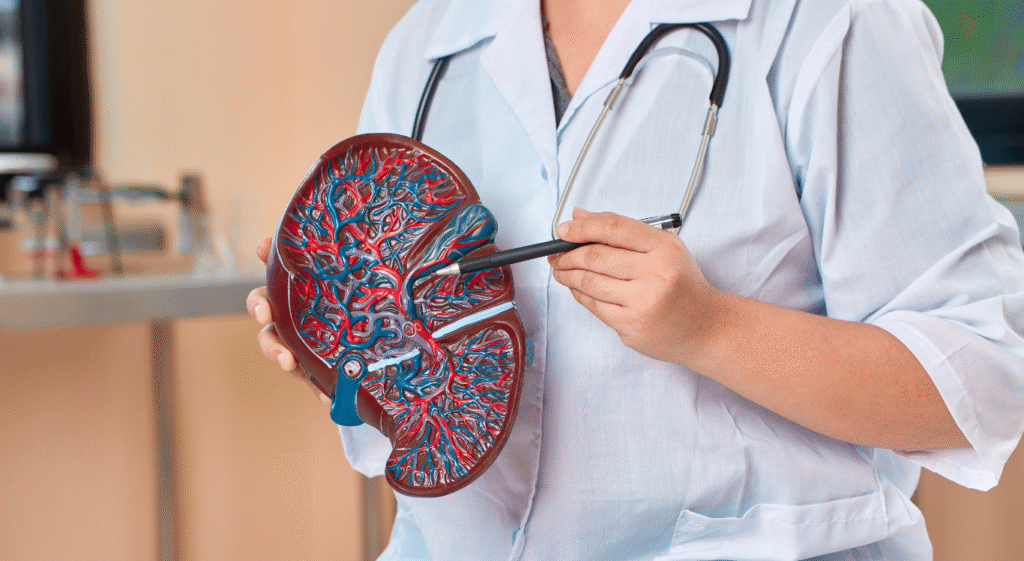SGPT (Serum Glutamate Pyruvate Transaminase) and SGOT (Serum Glutamate Oxaloacetate Transaminase) are enzymes present mainly in the liver, but also in the heart, muscles, and other tissues. They play an important role in protein metabolism. Under normal conditions, only a small amount of these enzymes circulates in the blood. However, when the liver or muscle cells are damaged, SGPT and SGOT levels rise significantly.
Doctors usually prescribe a liver function test to measure these enzymes. Normal SGPT levels are usually between 7–56 units per liter (U/L), while SGOT levels typically range from 8–45 U/L. Small variations are not alarming, as lifestyle factors such as exercise, diet, or mild infections may cause temporary changes. But a persistent or sharp rise indicates something more serious.
These enzymes act like an early warning system for your liver health. If ignored, high values could be linked to fatty liver disease, hepatitis, alcohol-related damage, or even heart and muscle conditions. Understanding the safe and danger levels of SGPT and SGOT helps in early diagnosis and better prevention of long-term health problems.
What Is the Danger Level of SGPT?
SGPT is considered one of the most sensitive markers of liver health. A mild increase above the normal range might not be a major cause of concern if it is temporary. However, when SGPT crosses three to four times the upper limit (above 200 U/L), it is considered high and needs medical evaluation. Very high levels, sometimes over 1000 U/L, are often associated with acute viral hepatitis or toxic liver injury caused by drugs or alcohol.
The danger with elevated SGPT lies in the fact that the liver may be silently under stress without obvious symptoms. Patients may not notice anything in the early stages, but persistent elevation could indicate fatty liver, hepatitis B or C, cirrhosis, or other chronic conditions. In extreme cases, if SGPT remains dangerously high without treatment, it can progress to liver failure.
Doctors often look at the trend over time instead of just one reading. If your SGPT is elevated, lifestyle modifications like reducing alcohol intake, maintaining a balanced diet, exercising regularly, and avoiding unnecessary medications can help. Medical supervision is necessary to find the root cause and prevent the damage from reaching an irreversible stage.
What Is the Danger Level of SGOT?
SGOT is found in many organs, including the liver, heart, and muscles. This makes its interpretation slightly more complex than SGPT. The normal range of SGOT is up to 45 U/L. When SGOT rises above 200 U/L, it is considered a red flag. A very high value, especially over 1000 U/L, could indicate severe liver inflammation, muscle injury, or even a heart attack.
One important factor is the SGOT/SGPT ratio, which doctors use to identify the underlying cause. For example, if SGOT is higher than SGPT (ratio more than 2:1), it often points to alcohol-related liver disease or muscle injury. When both are elevated but SGPT is higher, non-alcoholic fatty liver disease or viral hepatitis might be the cause.
Extremely high SGOT levels, if left untreated, may lead to complications like jaundice, cirrhosis, or cardiac damage. Since SGOT can also increase due to exercise or muscle injury, doctors usually consider other test results, patient history, and symptoms before declaring it dangerous. Regular monitoring, lifestyle changes, and proper treatment can help bring SGOT back into a safe range.
When to Worry About SGPT and SGOT Levels
Occasional mild fluctuations are not always alarming, but consistently high levels are a sign that your body needs attention. If SGPT or SGOT goes above 200–300 U/L, you should not ignore it. At this stage, it is strongly recommended to consult a doctor and undergo further tests like ultrasound, viral markers, or cardiac evaluations depending on your condition.
Danger levels are especially concerning when both SGPT and SGOT are elevated together. This usually indicates that the liver is inflamed or damaged. Symptoms such as fatigue, yellowing of the eyes (jaundice), loss of appetite, or abdominal pain may also accompany high readings. If these symptoms appear alongside very high enzyme levels, immediate medical care is necessary.
The good news is that early intervention often prevents serious complications. With proper treatment and lifestyle corrections, enzyme levels can return to normal and liver function can improve. Ignoring the warning signs, however, can push the liver or heart into irreversible damage. This is why understanding the danger level of SGPT and SGOT is crucial for long-term health.
FAQs on SGPT and SGOT
Q1. What are normal SGPT and SGOT levels?
Normal SGPT is 7–56 U/L, and normal SGOT is 8–45 U/L.
Q2. At what level should I be worried?
Levels above 200 U/L for either enzyme are considered dangerous and need medical evaluation.
Q3. Can diet affect these enzymes?
Yes, high-fat diets, alcohol, and processed foods can increase enzyme levels. A balanced diet helps maintain liver health.
Q4. Can exercise raise SGOT or SGPT?
Yes, intense exercise can temporarily increase enzyme levels, but this usually normalizes with rest.
Q5. How can I reduce high SGPT and SGOT levels?
Avoid alcohol, eat a liver-friendly diet, exercise moderately, and follow prescribed medications or treatment plans.



